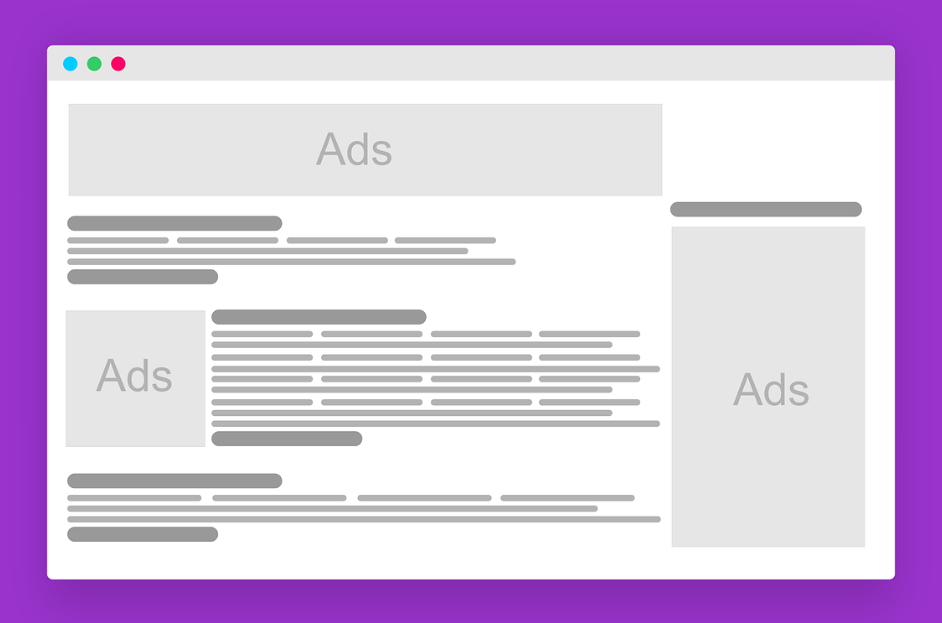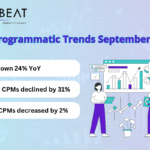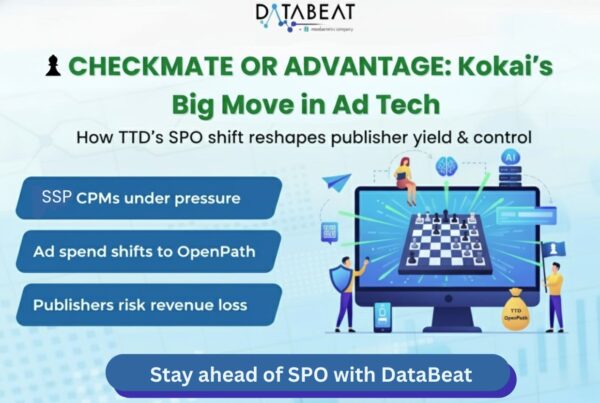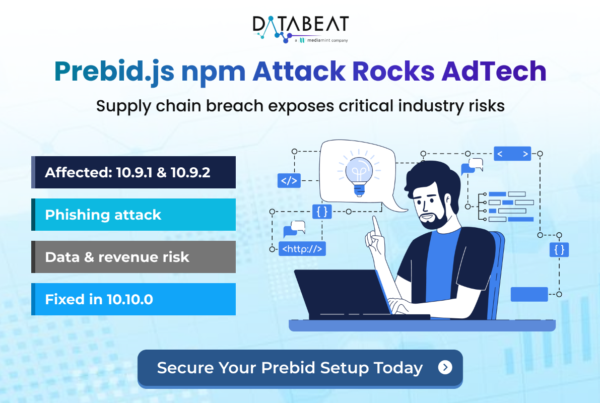
Want to know how much you could benefit from Ad Refresh? Use our calculator to find out!
Have you ever noticed how arboreal animals effortlessly hang from tree branches, using their tails and hands to relax for hours? Adhesion ad units work in a similar way in the ad tech industry. They stay present on the user’s screen, maintaining visibility just like those animals. Once, when the ad industry was plagued by banner blindness and monotonous ad formats, these sticky ads came up like magic. The cool, revenue-generating sloths 🦥 (Sticky ads)—even now bringing a steady, engaging presence to digital advertising.
Adhesion ad unit:
Adhesion is an ad format that continually fixes to the bottom of the display while the user scrolls through the page, which means it stays on the viewport regardless of the user scrolling up or down.
These ad units are called by different names over the internet: Adhesion/Sticky, or Anchor ad units. They can be anchored to the top, bottom, and sides and work on desktop, mobile, and tablet devices as display or video types.
Most common adhesion ad units run as 320*50 size on mobile and 728*90 size on desktop.
IAB Definition:
Adhesion ad units will persist on a page as the user interacts with the device and content, with some changes like zooming or orientation in a consistent manner and elegant fashion. As per IAB, these ad units are called “Adhesion banners.”
Google Ad Manager Definition:
A sticky ad is a fixed or persistent ad unit that stays there as the user scrolls through content on the page up or down. As per GAM, these ad units are called “Sticky Ad Units.”
Criteria to follow for an Adhesion Ad unit as per IAB :
- The adhesion banner must be positioned at the bottom of the device display.
- Persistent yet unobtrusive presence
- Viewer control
- The Mobile Adhesion banner must have a close button in the top right corner.
Types of Adhesion :
Adhesion ad units are typically divided into two forms, namely horizontal and vertical ad units.
| Horizontal | Vertical |
|---|---|
| These are landscape oriented ad units that stay at the top or bottom of the page. | These are portrait-shaped ad units that are present on the sides. |
| They are not allowed to move, follow the cursor, or float away on the page | These ad units also won't float or move on the page. |
How to set up ad units as sticky ad units?
- Sign in to your GAM account.
- Click on Inventory > Inventory Rules > Select Publisher Declarations.
- Click on Display Inventory type.
- Then select New Display Publisher Declaration.
- Now, enter a name for the declaration.
- Select the inventory that will be included or left out of your targeting.
- Expand one of the targeting sections, like Inventory.
- For including selections to the targeting criteria, hover the pointer over the item and click Include ✔️
- For excluding selections in the targeting criteria, hover the pointer over the item and click Exclude🚫
- All the selected items will appear in the right column of the targeting table.
- For removing any selection, click Remove.
- Under the Sticky Ads, choose a checkbox to indicate that the selected inventory serves either horizontal or vertical sticky ads.
- Vertical sticky ads are portrait-shaped ad units that stay on the sides of the page.
- Horizontal sticky ads are landscape-shaped ad units that present at the top of the page.
- Bottom horizontal sticky ads are landscape-shaped ad units that present at the bottom of the page.
- Finally, click on Save.
Advantages :
- Increased Viewability: Ad viewability is a vital metric in digital advertising, which can be enhanced with these ad units. Adhesion follows users as they scroll through web pages, and that converts to highly viewability.
- Advertisers always look for high viewability.
- High viewability: High viewability ensures good revenue (benefits publishers).
- Increase ad revenue: These ad units will increase ad performance & ad revenue.
- More Impressions: After some session duration with refresh, publishers can serve multiple adhesion impressions.
- High CPMs: These ad units are shown to yield higher CPMs compared to other banner ad units.
- Increase Competition: These ad units can be targeted by Ad Exchange and header bidding also, which results in more auction pressure by high competition.
- Inventory Types: These ad units are not only limited for display (sticky leaderboard, side rail, bottom rail) but also for video inventory type (sticky video).
- We know that video offers higher CPMs in the industry. But Sticky videos take it to the next level.
Disadvantages :
- Compatibility Issues: Some ad networks like Facebook don’t allow adhesion ad units on their platforms.
- Google AdSense won’t allow it unless we use their anchor ad unit type.
- Damage performance: Can negatively impact the performance of other ads on the web pages.
- Need Technical Expertise: This requires some level of technical expertise for adhesion implementation and customization.
- Hurt User Experience: The concept of adhesion gives publishers an edge to continuously show ads while at the same time not giving users a bad experience. But large sticky ads may lead to a poor user experience.
Need Publisher’s surveillance: Publishers should make sure that rules are not violated or else it will lead to blockage or ban of site.
A note to publishers:
- Several cases have shown an increase in impressions, CTR, and eCPM, which says that users are not bothered with adhesion design and are not willing to close often.
- For some publishers with gaming and dynamically changing content, sticky ads may not be ideal.
- Such publishers can perform A/B testing to know the performance of adhesion ad units.
- Publishers should make sure the user experience is rich and high-quality and make sure that the sticky ad units don’t disrupt the page’s performance.
How can Databeat help?
Databeat can help to set up Sticky ads (Display & Video) for publishers and strategize better to yield good revenue. We can also help by trying A/B tests to see how sticky ads are working for publishers who have dynamically changing content. With these optimally strategized interventions, Databeat can support publishers, whether existing or new to the industry, by evaluating performance.










